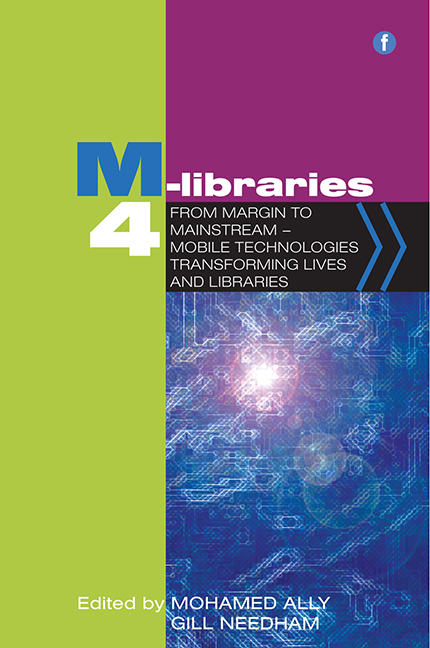22 - If you build it will they come? The importance of collaboration and marketing in developing and promoting mobile services
Published online by Cambridge University Press: 10 September 2022
Summary
Introduction
No library mobile site needs be a site unto itself. Rather, collaborating with campus partners and constituents on the development, and taking steps to advertise new mobile services, behoves everyone – especially users – who will benefit from a co-located suite of academic services to meet their needs.
The Penn State University Libraries serve almost 100,000 graduate and undergraduate students, as well as Penn State Alumni, faculty and staff and the general public. In 2009, we saw a growing trend among this diverse group of library users, namely, the increased use of mobile devices to access information.
Gathering needs
With the understanding that mobile usage was exploding, but without a clear roadmap for delivering the Libraries’ services to mobile users, we attended the second M-Libraries conference, which helped us to formulate our mobile strategy. Our first step was to survey a crosssection of our students, asking them what library services they would be most likely to access via a mobile device. Not surprisingly, the top three responses included checking hours, searching the Libraries’ catalogue and looking for an available computer (Table 22.1 on the next page).
Based on our findings, we planned to provide a site that was limited in content, concen - trating our development on tasks that would be performed when our users were ‘on the go’. In the spring of 2010, we launched a very basic textbased library site, as shown in Figure 22.1.
Partnering to develop a mobile site
Although this was a valiant first step, there was no denying that our site was rudimentary in comparison to the devicespecific applications being released at the time. In addition to upgrading the functionality and look and feel of our first mobile site to provide a more ‘app-like’ experience, we hoped to integrate the Libraries’ mobile site with other University mobile services. In early 2011, the Emerging Technologies (ET) Department at Penn State was tasked with developing a Universitywide mobile pres ence built on the MIT open source Kurogo framework, and needed a partner with whom to collaborate on developing a prototype for data sharing. The timing was perfect for the University Libraries.
- Type
- Chapter
- Information
- M-Libraries 4From Margin to Mainstream - Mobile Technologies Transforming Lives and Libraries, pp. 209 - 214Publisher: FacetPrint publication year: 2014



